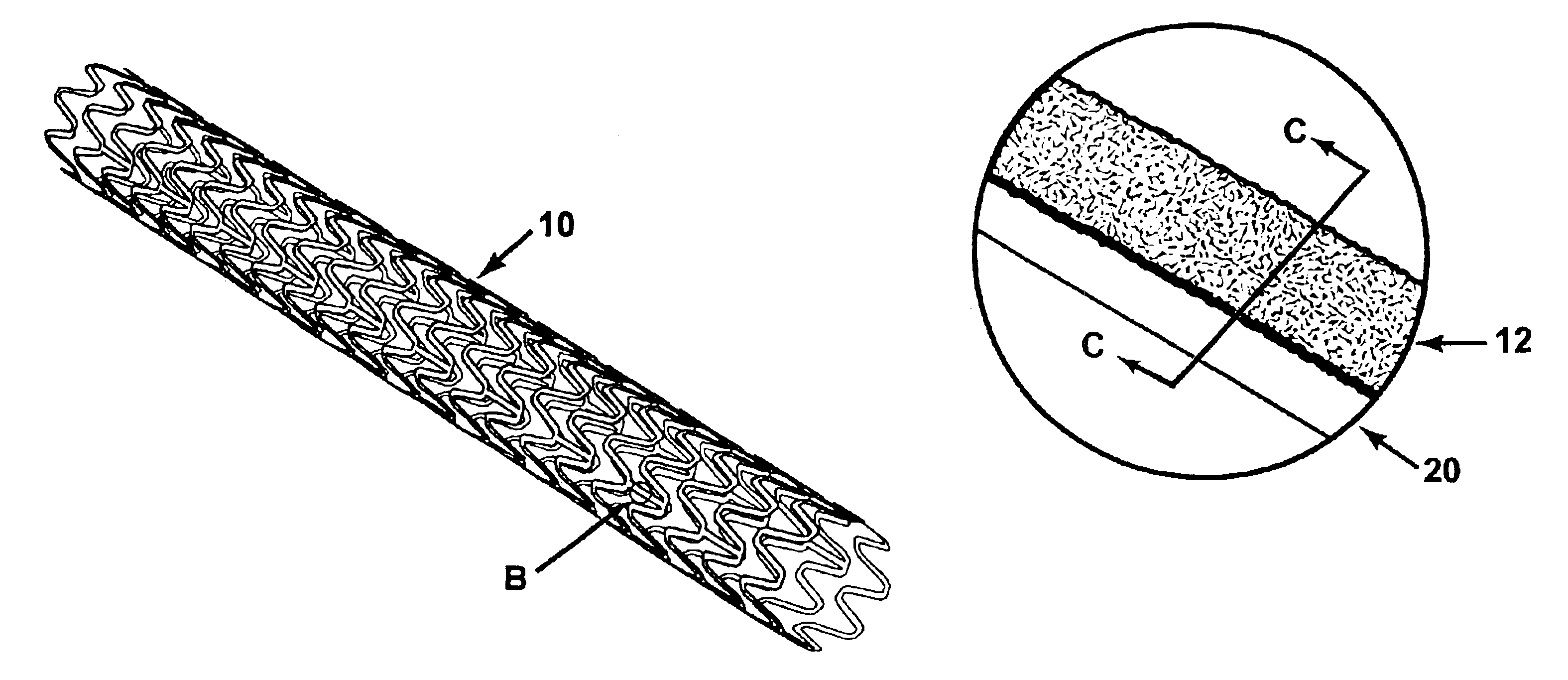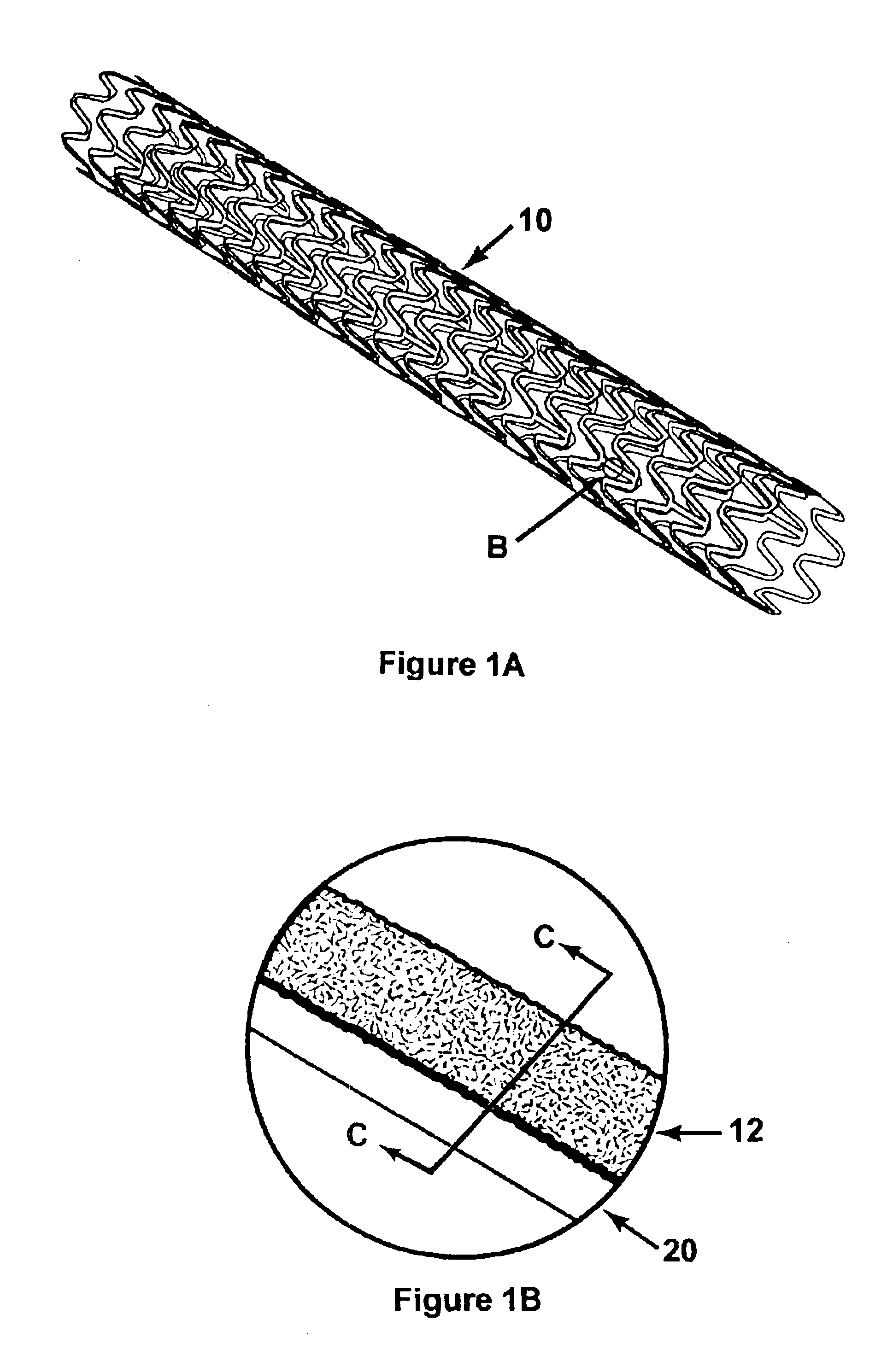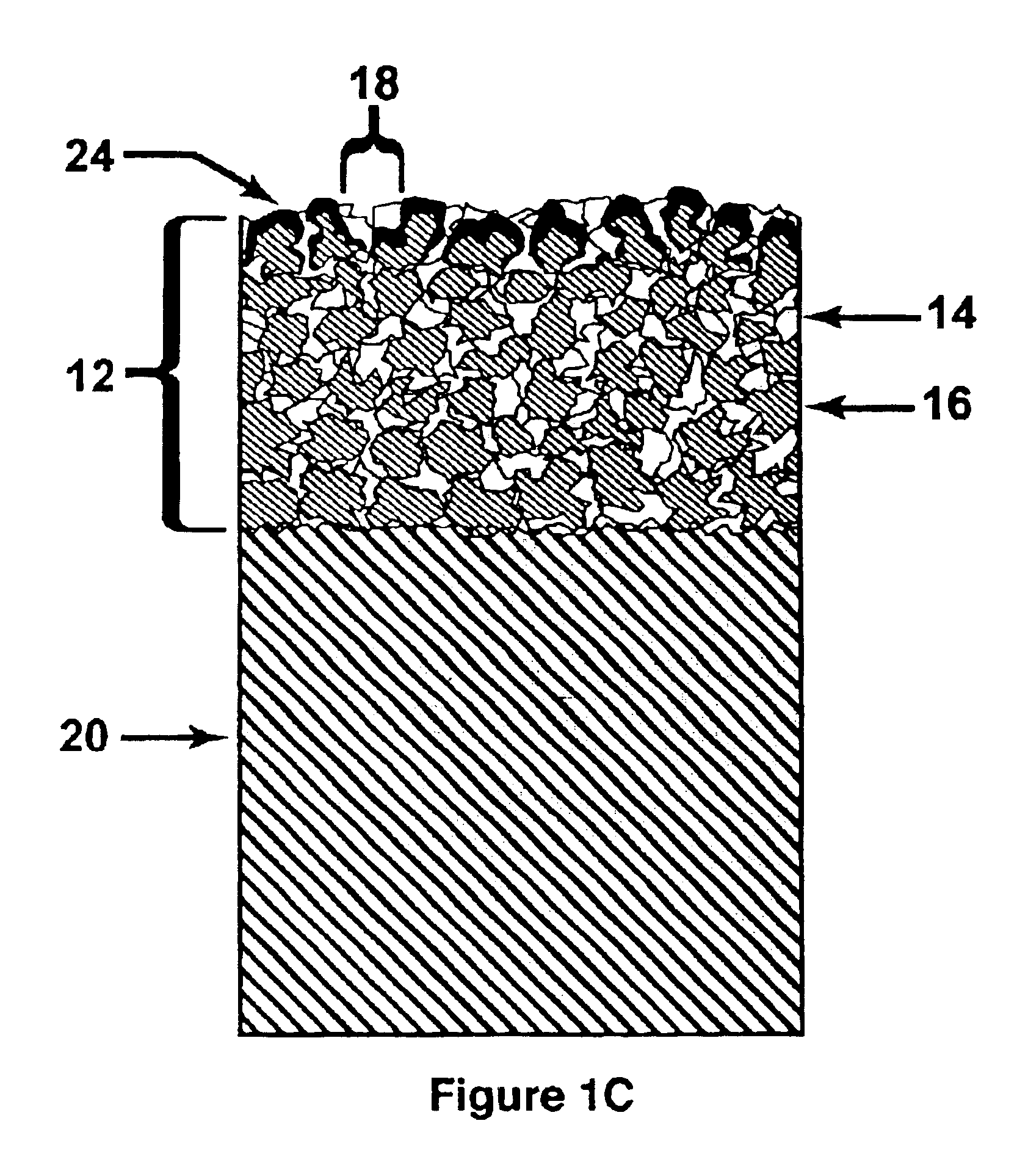Process for forming a porous drug delivery layer
a technology of porous layer and drug, applied in the field of drug delivery devices, can solve the problems of difficult adhesion of polymer to the delivery device, complicated drug delivery process, undesirable cellular responses, etc., and achieve the effects of increasing the retention time of drugs, high adhesion, and increasing the effect of drug
- Summary
- Abstract
- Description
- Claims
- Application Information
AI Technical Summary
Benefits of technology
Problems solved by technology
Method used
Image
Examples
example 1
Process for Forming a Gold Drug Delivery Device
[0049]Gold was electroplated in steps from a standard cyanide high purity gold electroplating bath sold by Technic, Inc. as Technic Orotemp 24. First, a standard full density gold deposit was formed with a pulsed current with an on cycle of 1 millisecond and an off cycle of 9 milliseconds at an average current density of 3 ASF for 20 minutes at moderate agitation at a bath temperature of 125 degrees Fahrenheit. A porous layer was then grown by switching to direct current (non-pulsed) and increasing the current density to 90 ASF. The time for the porous layer growth was based on a plating rate of about 1 micron per minute. A 10 micron thick porous layer, appropriate for some drug delivery applications, therefore required 10 minutes to grow. SEM photographs showed the typical porous layer grown under these conditions to comprise grains of about 0.5 to 1.5 microns across, with sharp angular crystalline faces. The grains were randomly orien...
example 2
[0050]The process of Example 1 was repeated using a gold bath sold by Technic, Inc. as 434 HS. The current density was reduced to about one-third of the current density used in Example 1. Similar porous deposits were produced.
example 3
[0051]The process of Example 1 was repeated using the bath of Example 1, modified to a pH of 11, with potassium cyanide added to obtain a free cyanide concentration of 0.2 to 2.0 g / l. The current density was reduced to about 20% of that used in Example 1. The high pH bath with free cyanide was more efficient at dissolving gold from the porous layer during the reverse cycles than the baths used in Examples 1 and 2. The high pH bath produced very small granules, down to about 0.5 microns.
PUM
| Property | Measurement | Unit |
|---|---|---|
| porosity | aaaaa | aaaaa |
| porosity | aaaaa | aaaaa |
| porosity | aaaaa | aaaaa |
Abstract
Description
Claims
Application Information
 Login to View More
Login to View More - R&D
- Intellectual Property
- Life Sciences
- Materials
- Tech Scout
- Unparalleled Data Quality
- Higher Quality Content
- 60% Fewer Hallucinations
Browse by: Latest US Patents, China's latest patents, Technical Efficacy Thesaurus, Application Domain, Technology Topic, Popular Technical Reports.
© 2025 PatSnap. All rights reserved.Legal|Privacy policy|Modern Slavery Act Transparency Statement|Sitemap|About US| Contact US: help@patsnap.com



